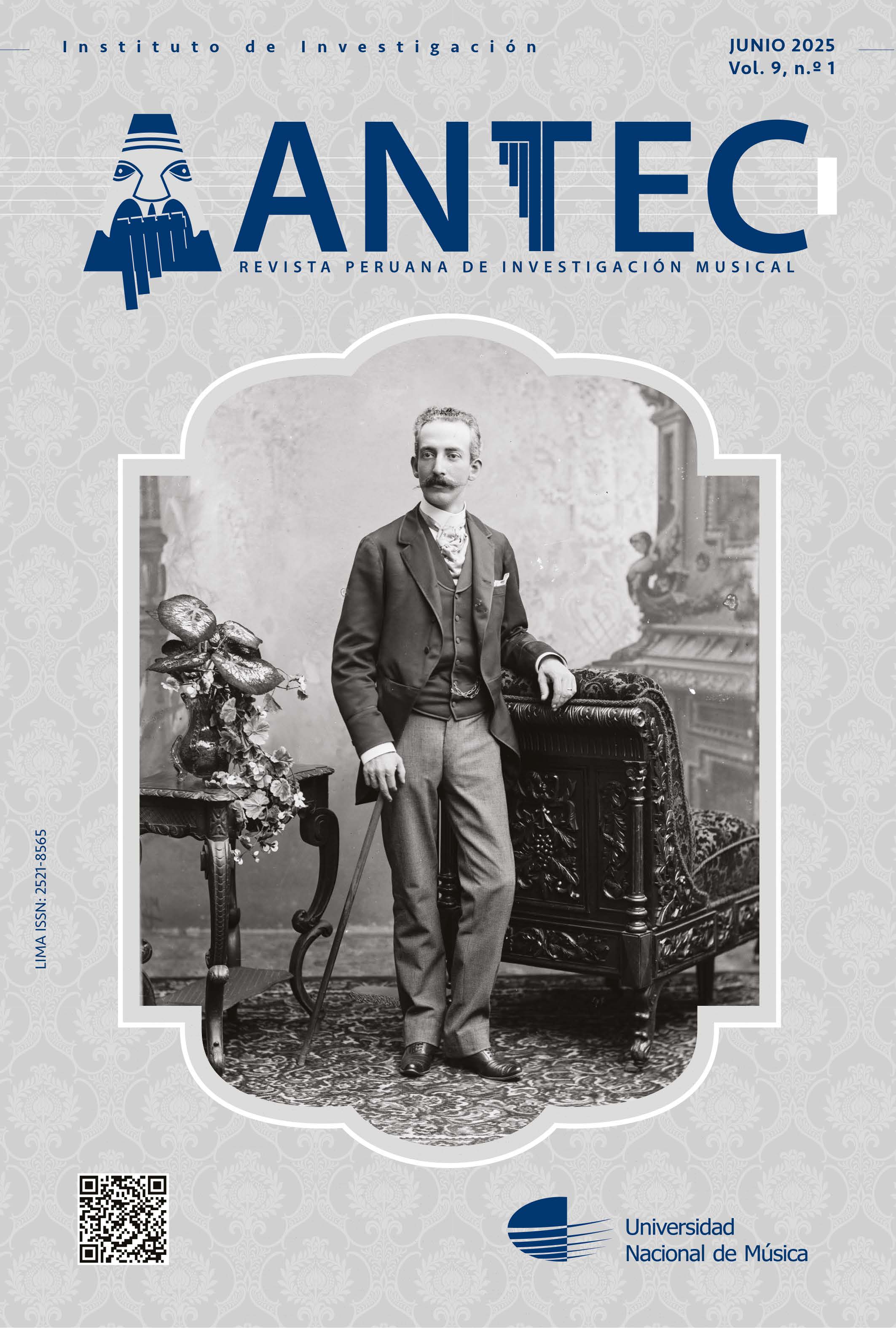Summary of the Musical Educational Intervention in Ticuna Communities 2023–2024
DOI:
https://doi.org/10.62230/antec.v9i1.256Keywords:
Indigenous, Meaningful learning, Community music, Educational interventionAbstract
This article examines the implementation of a music education program in the ticuna communities of San José de Yanayacu, Cahuide de Yanayacu, and Nueva Galilea de Callarú in the Amazon region of Loreto, Perú, during the 2023–2024 period, carried out with the purpose of strengthening community cultural expressions and the practice of the native language through the teaching of musical instruments. The methodology was implemented in the communities through music teaching interventions, assigning recorders and melodicas along with a learning guide that incorporated ticuna community rhythms and melodies. Participants of different ages were included, thus promoting the transfer of knowledge within the community. In the second year of implementation, several participants completed the educational program, demonstrating the ability to interpret rhythms on the melodica and melodies on the recorder. As a result, to date, the musical knowledge is practiced by the beneficiaries in community activities such as ticuna religious ceremonies, which strengthens cohesion and learning within the community. In the context of community education and meaningful learning, the music education program in indigenous communities has revitalized ticuna cultural expressions through the teaching of musical instruments and the transmission of knowledge between generations.
Downloads
References
Anderson, L. (1958). Vocabulario breve del idioma ticuna. Tradición, Revista Peruana de Cultura 8(21), 53–68.
Anderson, L. (1966). The structure and distribution of ticuna Independent Clauses. Linguistics, 4(20), 5–30. https://doi.org/10.1515/ling.1966.4.20.5
Aretz, I. (2001). Música tradicional de los pueblos indígenas de América Latina. Editorial Universitaria.
Ausubel, D. P. (1968). Educational psychology: A cognitive view. Holt, Rinehart and Winston.
Belaunde, L. E., Letts, P., y Sullón, K. (2016). Woxrexcüchiga: El ritual de la pubertad en el pueblo ticuna. Ministerio de Cultura.
Campbell, P. S., y Wiggins, T. (2013). The Oxford handbook of children's musical cultures. Oxford University Press. https://doi.org/10.1093/oxfordhb/9780199737635.001.0001
Comisión Nacional para el Desarrollo y Vida sin Drogas (DEVIDA). (2017). Estrategia Nacional de Lucha Contra las Drogas 2017 – 2021. https://www.devida.gob.pe/documents/20182/314196/Estrategia_FINAL_castellano2.pdf
Geertz, C. (1973). The interpretation of cultures. Basic Books.
Güereca, R., Blásquez, L. I. y López, I. (2016). Guía para la investigación cualitativa: etnografía, estudio de caso e historia de vida. Universidad Autónoma Metropolitana. http://bdjc.iia.unam.mx/items/show/272#lg=1&slide=
Hill, J. D. (2018). Native musical traditions and changing global soundscapes in South America. En B. Brabec de Mori, M. Lewy, & M. A. García (Eds.), La música y los pueblos indígenas (pp. 167–177). Centro Nacional de Documentación Musical Lauro Ayestarán.
Instituto Nacional de Estadística e Informática (INEI) (2017). Loreto: Compendio estadístico. https://www.inei.gob.pe/media/MenuRecursivo/publicaciones_digitales/Est/Lib1501/libro.pdf
Merriam, A. P. (1964). The anthropology of music. Northwestern University Press.
Ministerio de Educación. (2018). Lenguas originarias de Perú. Quad/Graphics Perú S.
Morey, H., & Sotil, G. (2000). Panorama histórico de la Amazonía peruana: Una visión desde la Amazonía. Municipalidad Provincial de Maynas.
Monkemeyer, Helmut. (1971). Método para tocar flauta dulce soprano. Moek Verlag nº. 2064.
Ochoa Gautier, A. (2020). Aurality: Listening and Knowledge in Nineteenth–Century Colombia. Duke University Press.
Ramírez, Y. G., Ríos, N., Gallardo, E. (2022). Quena amazónica: expresión artística y cultural en la música peruana. Revista Electrónica Complutense de Investigación en Educación Musical, 19, 121–129. https://dx.doi.org/10.5209/reciem.75752
Revoredo, R. L. (2024). Experiencia y reflexiones sobre la educación musical en una comunidad nativa ticuna de la amazonía peruana. Revista AV Notas, 17, 9–23.
Sagredo, H. (1997). El núcleo melódico. Fundación Vicente Emilio Sojo.
Salazar, L. (1988). Intento de aproximación a la música amazónica: introducción al estudio de la música del oriente peruano. Shupihui, 13(47), 315–320.
Schippers, H. (2013). Community Music Contexts, Dynamics and Sustainability. The Oxford handbook of community music. Oxford University Press.
Seeger, A. (2004). Why Suyá Sing: A Musical Anthropology of an Amazonian People. University of Illinois Press.
Stoll, D. (1985). ¿Pescadores de hombres o fundadores del imperio? El Instituto Lingüístico de Verano en América Latina. Ediciones Abya–Yala.
Downloads
Published
Issue
Section
License
Copyright (c) 2025 Antec: Revista Peruana de Investigación Musical

This work is licensed under a Creative Commons Attribution-NonCommercial-NoDerivatives 4.0 International License.














